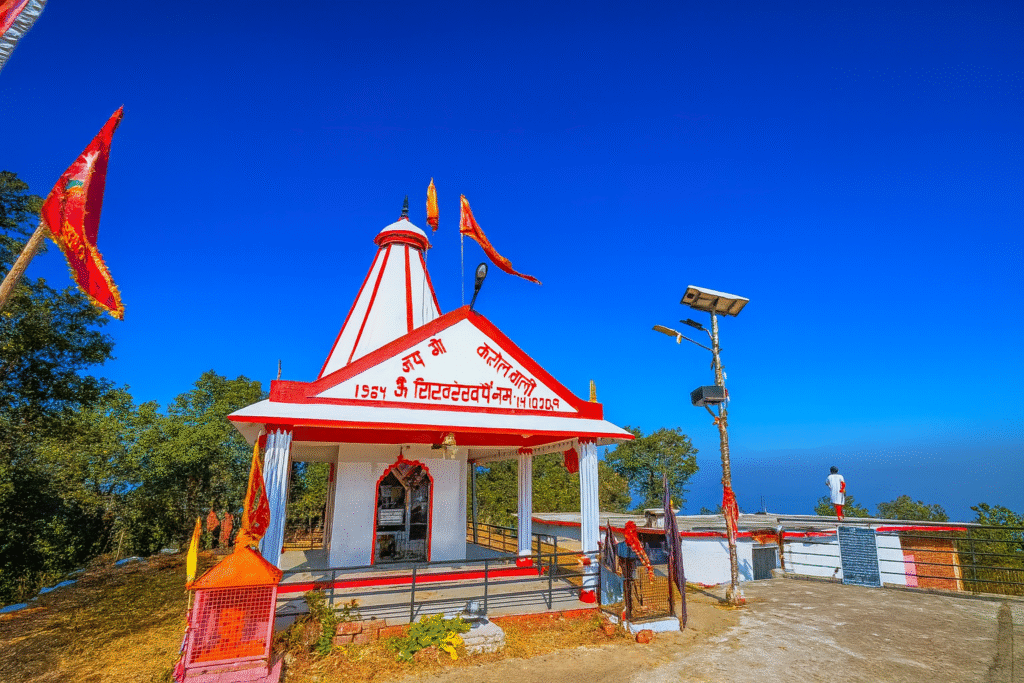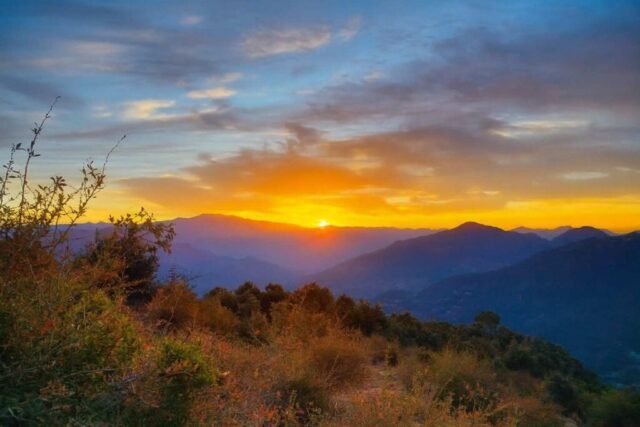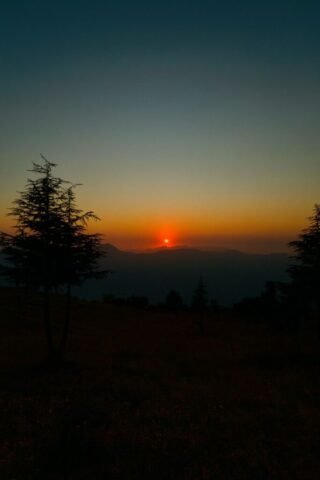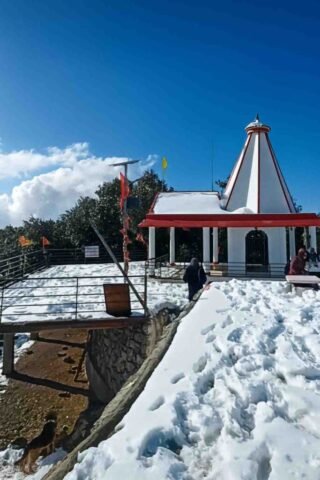If you are visiting Solan or Himachal Pradesh, there is one destination that brings together adventure, spirituality, and mythology – Mount Karol, also known as Karol Tibba.
Mount Karol Tibba is the highest peak of Solan, standing tall at about 2,240 meters (7,350 ft). Karol Tibba is not only a trekking spot but also home to a mystical cave (Karol Gufa), considered the longest cave in the Himalayas, and a small yet revered Karol Mata Temple, where devotees especially visit during Navratri. Believe me, the Mount Karol trek is going to be the best trek of your life.
In this blog, we will explore:
The history and mythology of Mount Karol (including the Pandava Cave)
The trekking route and natural beauty
The mysteries of Karol Gufa
Karol Tibba Temple and festivals
Visitor information – how to reach, best time, entry, and tips
Nearby attractions in Solan
History & Significance of Mount Karol (Karol Tibba)
Mount Karol, the highest peak of Solan, is known not only for its natural beauty but also for its historical and religious importance. This mountain has been shaped over millions of years by rocks and caves, but what makes it truly special is its mythological connection and local faith.
1. Mythological Connection – The Pandava Cave
The most popular legend associated with Mount Karol is linked to the Pandavas of the Mahabharata. According to local beliefs:
During their exile, the Pandavas spent some years inside Karol Gufa.
The cave contains narrow passages that go deep into the mountains.
Locals believe that the cave once connected all the way to Pinjore (near Chandigarh). While this has never been scientifically proven, the story has been passed down through generations.
This is why Karol Gufa is considered both mystical and sacred.
This legend makes Karol Tibba not just a trekking trail, but an epic heritage site, where history and faith intertwine.
2. Spiritual Significance – Karol Mata Temple
At the peak stands the Karol Mata Temple, dedicated to Goddess Kali, which strengthens the spiritual aura of the mountain.
During Navratri, hundreds of devotees trek up to seek blessings.
The sound of temple bells and fluttering flags in the mountain breeze create a divine atmosphere.
For locals, Karol Mata is considered a protector deity, safeguarding their villages and families.
This makes Karol Tibba not only a destination for trekkers but also a significant pilgrimage site.
3. Natural & Cultural Significance
Mount Karol is famous for its panoramic views – from here you can see the Shimla hills, Solan town, Kasauli, Barog, Chail, and even Chandigarh plains on clear days.
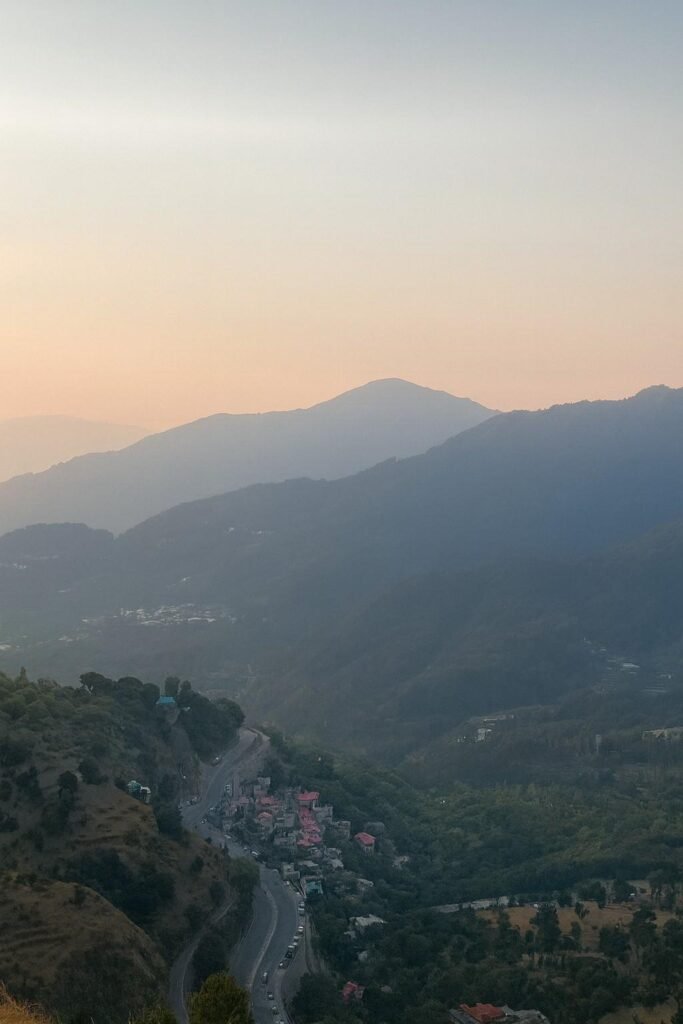
The forests are filled with pine, deodar, and wildflowers, promoting eco-tourism.
For local villagers, the mountain is a part of their identity, and stories connected with it still live on through oral traditions.
4. Historical Anecdotes
Some historians believe that the caves and hills around Karol were used during ancient trade routes, connecting Solan with the Pinjore plains.
The size and structure of Karol Gufa suggest that in prehistoric times, it might also have served as a shelter point.
👉 Taken together, Mount Karol becomes a multi-dimensional heritage site where mythology, spirituality, natural beauty, and local traditions all coexist.
5. Trekking Experience to Mount Karol (Karol Tibba)
Trek Starting Point
The trek begins from Chambaghat (NH-22), near Solan town.
Distance: 5–6 km uphill.
Time: 2–3 hours climbing up, and about 1.5 hours downhill.
Trail Description
Chambaghat to the forest trail – The trek begins with a steep climb through dense pine forests.
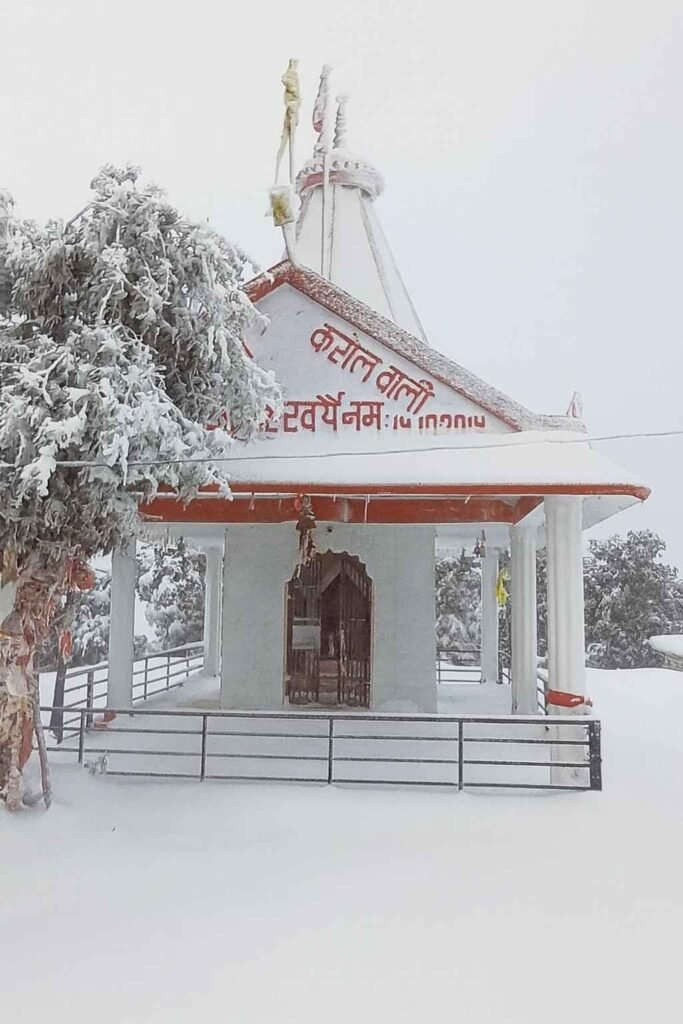
Midway huts – Along the way, there are small village huts and natural water sources where trekkers can rest.
Karol Mata Temple – Near the peak is a small temple dedicated to Goddess Kali, where devotees stop for prayers.
Karol Gufa Entrance – Just beyond the temple lies the entrance to Karol Gufa, which adds an adventurous touch to the journey.
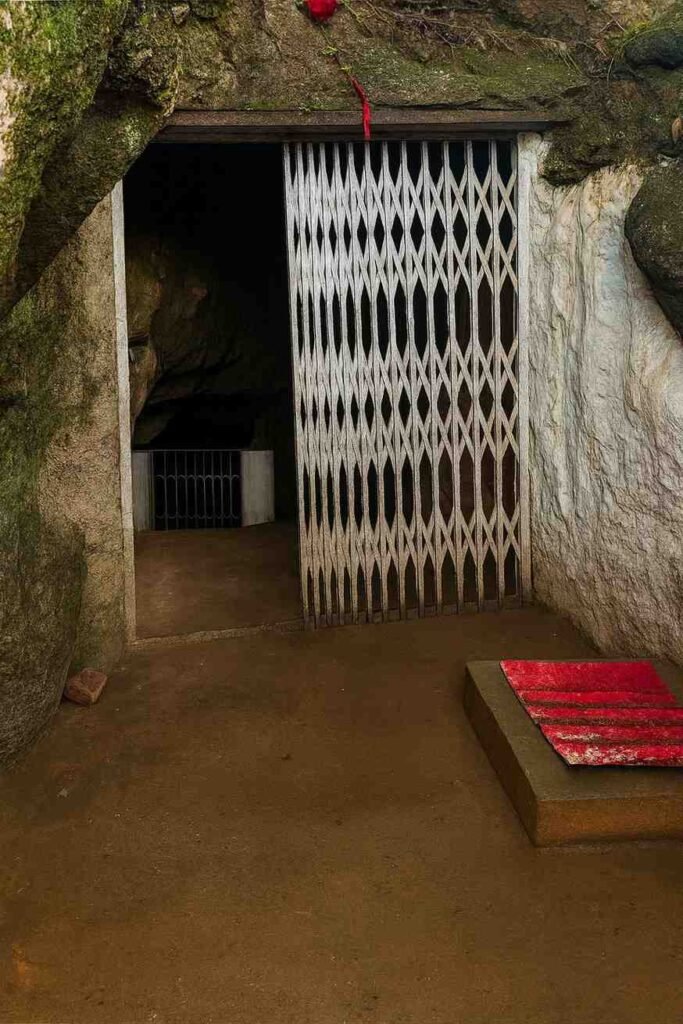
Summit Point – From the peak, you get a 360° panoramic view of Solan, Kasauli, Barog, and even Chandigarh plains on clear days.
Trek Difficulty & Tips
Difficulty Level: Easy to moderate (suitable for beginners).
Tips:
Start early in the morning (by 8–9 AM).
Carry sufficient water and light snacks.
Wear trekking shoes and a cap.
Be extra careful during monsoon as the trail becomes slippery.
Karol Mata Temple (Temple at the Peak)
The Karol Mata Temple at the top of the peak is a sacred spot for locals.
Dedicated to Goddess Kali, it is considered highly powerful.
During Navratri, pilgrims trek up to the temple for special prayers.
Locals believe Karol Mata protects their villages and families.
The sound of temple bells and the sight of flags waving in the wind create a divine ambiance.
Karol Gufa – The Mystical Cave of the Pandavas
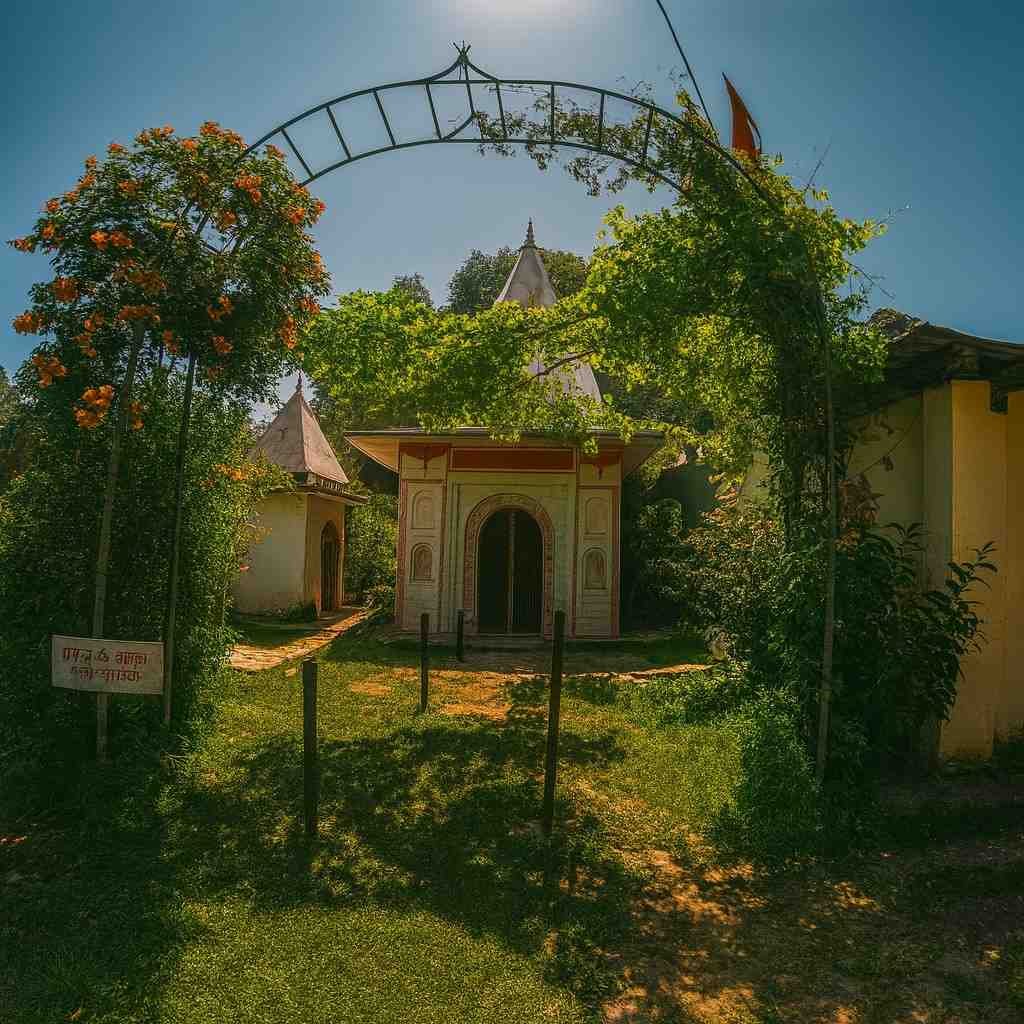
For visitors, the biggest attraction at Karol Tibba is Karol Gufa, which combines mythology with adventure.
Size: About 5–6 km long, considered the longest cave in the Himalayas.
Mythology: The Pandavas are believed to have spent part of their exile here.
Hidden Passage: According to local tales, the cave had a passageway leading to Pinjore.
Experience: Inside are narrow, dark, and damp passages – entry is recommended only with a flashlight and a guide.
Spiritual Energy: Locals believe the cave has a unique energy, giving visitors a sense of peace and mysticism.
7. Festivals & Traditions at Karol Tibba
Navratri: The biggest festival, when devotees trek up to the temple and special prayers are held.
Local fairs: During deity processions, Karol Tibba is sometimes included.
Youth Adventure: For local youth, Karol Tibba has become a popular spot for trekking, picnics, and outings.
8. Visitor Information (Travel Guide)
Altitude: 2,240 meters (highest point of Solan).
Best Time to Visit: Almost throughout the year. Avoid heavy monsoon (July–August) and peak winter (January) due to slippery trails and snowfall.
Trek Duration: 2–3 hours uphill, 1.5 hours downhill. The Karol Tibba trek starts from Chambaghat in Solan, but it’s best to take help from a local or someone who has already visited the place.
Entry Fee: Free of cost.
Facilities: A few village huts and natural water sources along the way, but no shops at the summit – carry your own supplies.
9. Nearby Attractions in Solan
Shoolini Mata Temple (Solan Town) – A revered shrine dedicated to Goddess Shoolini, this temple is the spiritual heart of Solan. It comes alive during the grand Shoolini Mela, held every June, attracting devotees and tourists with vibrant processions and cultural festivities.
Jatoli Shiv Mandir – Known as the tallest Shiva temple in Asia, this architectural marvel stands majestically on a hilltop. Its intricate carvings and peaceful ambiance make it a must-visit for devotees and those seeking scenic views.
Mohan Shakti Heritage Park (Ashwani Khad) – India’s largest heritage park, spread across vast greenery, showcases magnificent mythological sculptures, beautifully landscaped gardens, and serene meditation spaces. A perfect blend of spirituality and culture.
Arki Fort & Kuthar Fort – Step back in time with these centuries-old forts, featuring exquisite murals, Rajput-Mughal architecture, and panoramic views of the surrounding hills. Ideal for history lovers and architecture enthusiasts.
Barog Tunnel – Part of the UNESCO-listed Kalka–Shimla railway, this is the longest tunnel on the route. The picturesque railway station nearby offers charming colonial vibes and photo-worthy scenery.
Kasauli – Just 25 km from Solan, Kasauli is a tranquil British-era hill station known for its pine forests, colonial architecture, and pleasant weather. A perfect short getaway for nature lovers and peace seekers.
10. Our Experience at Mount Karol (Karol Tibba)
For us, the Mount Karol trek was an unforgettable mix of adventure and devotion. As soon as we started from Chambaghat, the forest air and the scent of pine gave us fresh energy. Every steep climb revealed new valley views that instantly removed our fatigue. This was the moment we realized we were climbing the highest peak of Solan.
Reaching the Karol Mata Temple, the ringing bells and cool mountain breeze gave us a divine feeling. Locals were praying inside, and we too joined them in seeking blessings. Visiting during Navratri is considered especially auspicious, and the temple’s spirituality made the trek even more meaningful.
A little further, we reached the entrance of Karol Gufa (Pandava Cave Solan). Standing there, we imagined how the Pandavas might have spent their exile days inside. The silence and darkness of the cave created a mystical vibe. According to local beliefs, this is the longest cave in the Himalayas, once believed to connect to Pinjore.
Finally, when we reached the summit, the sunset over the Shivalik ranges was the most magical moment. On clear days, you can see the Chandigarh plains along with the Kasauli–Barog hills. For us, Mount Karol Tibba was not just a trekking spot but a journey that blended mythology, nature, spirituality, and adventure all in one.
11. Mount Karol Trek Location, Photos & Video
YouTube Video:Coming soon on – KKSB Vlogs
Instagram Updates: Stay connected with us for reels and updates– @official_kksb
Photos Of Karol Trek
Location Of Karol Trek
The Karol Tibba trek starts from Chambaghat in Solan, but it’s best to take help from a local or someone who has already visited the place.
FAQs about Mount Karol (Karol Tibba)
Where is Mount Karol (Karol Tibba) located?
Mount Karol is located near Chambaghat, Solan, and is the highest peak of the district at 2,240 meters. The trek starts from Chambaghat and takes 2–3 hours to reach the summit.
Why is Karol Tibba famous?
Karol Tibba is famous for Karol Gufa (Pandava Cave) and the Karol Mata Temple. It is Solan’s most popular spiritual + adventure destination, offering stunning panoramic views.
What is special about Karol Gufa?
Karol Gufa is considered the longest cave in the Himalayas, linked to the Pandavas’ exile. Locals believe it had a hidden passage to Pinjore. Its silence and darkness make it a mystical experience.
How long is the Karol trek?
The trek from Chambaghat to Karol Tibba is about 4-5 km uphill, which takes 2–3 hours. Descending is easier and takes only 2–2.5 hours. It is suitable for beginners and nature lovers.
What is the best time to visit Karol Tibba?
You can trek to Karol Tibba almost any time of the year. The only times to avoid are during the heavy monsoon (July–August) and peak winter (January) when trails become risky.
What happens at Karol Mata Temple?
The temple at the peak is dedicated to Goddess Kali. During Navratri, pilgrims trek up and special prayers are offered. The bells and flags create a divine atmosphere.
What can you see from the summit?
From the summit, you can view Solan town, Barog, Kasauli, Chail, and even Chandigarh plains on clear days. Sunrise and sunset are the most magical moments here.
Is the trek suitable for beginners?
Yes, the trek is of easy to moderate difficulty. With sturdy shoes, water, and some stamina, beginners can enjoy it comfortably. Families and student groups often do this trek.
How to reach Mount Karol from Solan?
The starting point is Chambaghat, about 3–4 km from Solan town. You can hire an auto or taxi to Chambaghat, from where the trekking trail begins.
What is the difficulty level of the Karol Tibba trek?
The trek is considered moderate. The trail is steep but manageable. During monsoon, it gets slippery, so proper shoes and timing are important.
What are the nearby attractions to Mount Karol
Nearby attractions include Shoolini Mata Temple, Jatoli Shiv Mandir, Mohan Shakti Heritage Park, Barog Tunnel, and Kasauli – making it a complete trip alongside the trek.

